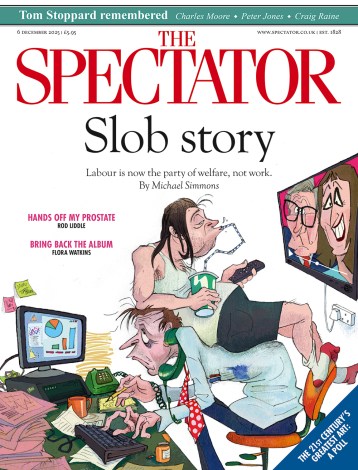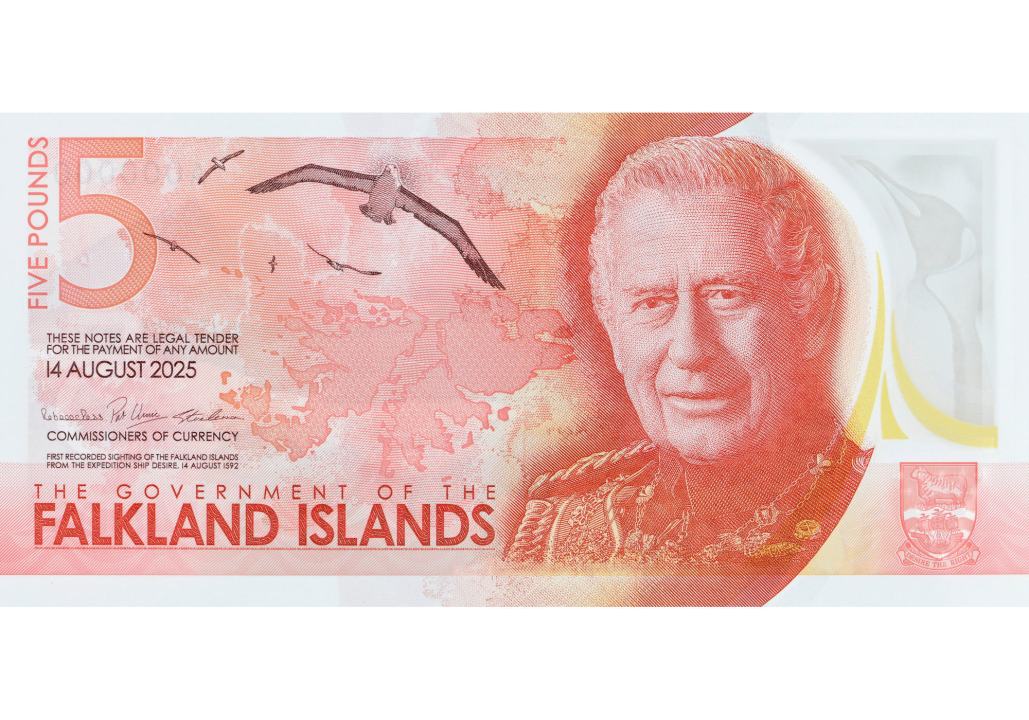While the Bank of England consults on who will appear on the next round of British bank notes, with reports that Winston Churchill could be dropped from the fiver, this week in the South Atlantic a new set of bank notes came into circulation.
The notes will include the Falkland Islands coat of arms, the national flower, the black-browed albatross, and Hugo Burnand’s official portrait of HM the King
August 14 is Falklands day, and in celebration of the first recorded sighting of the Islands (in 1592), fresh fivers, tens, and twenties will be rolled out: the first new notes since 1984. (There will be no new fifties, apparently the Falklands bought enough of these notes in the 80s to last for the next 90 years). It may come as a shock to some that we do not spend Sterling here in the Falklands. But such is life in the Overseas Territories.
For all that the Islands have moved towards the digital world of late, it was an acute shortage of £5 notes last year that spurred a public consultation on the design of some new currency.
Wildlife and the natural environment are overwhelming what people travel the long way to the Falklands for (over and above commemoration of the 1982 conflict), and in no fewer than nine rounds of consultancy with printers De La Rue, a local working group of Falkland Islands Government (FIG) officials, stakeholders, artists and numismatists homed in on these visuals.
The notes will include the Falkland Islands coat of arms, the national flower, the black-browed albatross, and Hugo Burnand’s official portrait of HM the King, complemented with a sweep of yellow from another king, the king penguin (one of several anti-forgery elements).
‘We felt quite a lot of responsibility,’ says Pat Clunie, FIG Treasury Secretary, ‘to produce something that people would find attractive, and that represents what we are as the Falkland Islands.’
In that vein, it is notable that Steeple Jason (the one island, out of around 780, pictured on the notes) was the land first sighted by captain John Davis of the Desire. Meanwhile, Government House, seat of the Governor to this day – and gracing all bank notes previously – is no longer represented.
Last night there was an unveiling at the Stanley museum with an auction of unique notes: an opportunity for literal buy-in, as it were.
A half-dozen notable serial numbers had pre-emptively been set aside. ‘No. 1’ went to His Majesty; ‘1982’ was donated straight to the museum. And just as I began to wonder if the auction was how the government was in fact funding this new print run, Andrea Clausen, Chief Executive, announced that all proceeds from the 16 lots would be going to a number of local charities.
The first lot – fittingly, ‘A001592’ – provoked a spirited battle, with a winning bid of £400 for only £35 worth of wonga. One bidder – amidst a certain amount of free wine – cheerfully bidded at least once against himself. Two or three Treasury bods won lots, with the Chief Executive and auctioneer suggesting government salaries might be in need of a review. All in, the better part of seven grand was raised.
Just getting the new money to the Falklands was not easy. Did Treasury have armoured vehicles, asked the insurers. And would the escort be armed? Clunie admits he did consider asking the Commander of the British Forces for Typhoon support, but decided otherwise.
The winners of the auction will not be the only ones to benefit. Soon, pristine wrapped £5 notes will be sent to the 700 or so children in the Falklands, including all those at the British military base.
For everyone else, the existing notes will start to be recalled in 2026. Meanwhile, £3.6 million in unissued notes has been transported to the furnace at the Stanley abattoir. Not how the Bank of England does that either, one imagines.
Among other things, A.S.H. Smyth is an employee of the Falkland Islands Government.








Comments